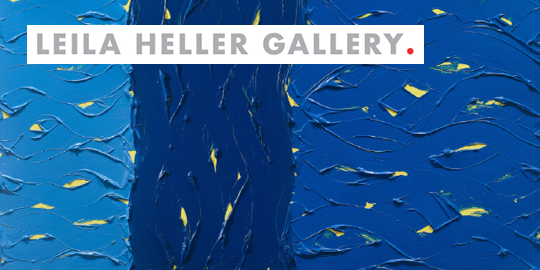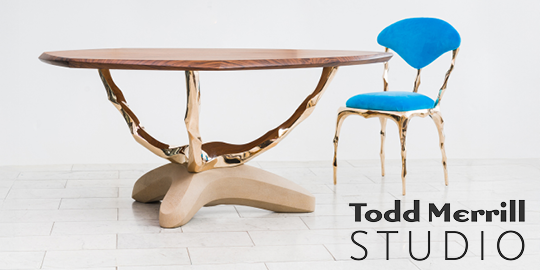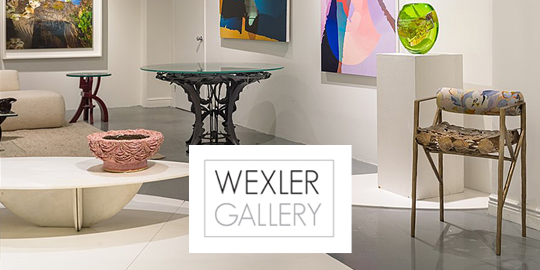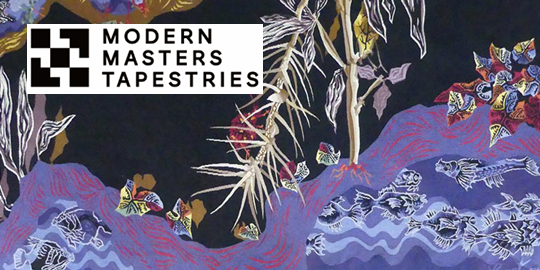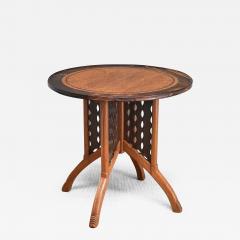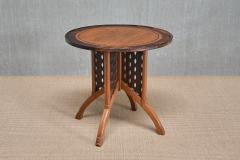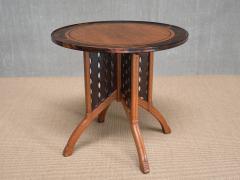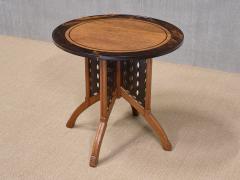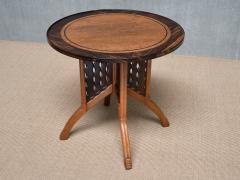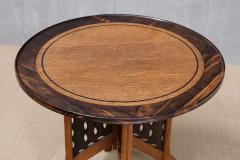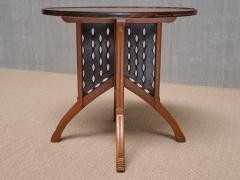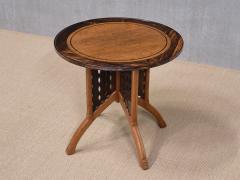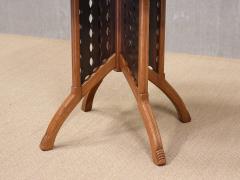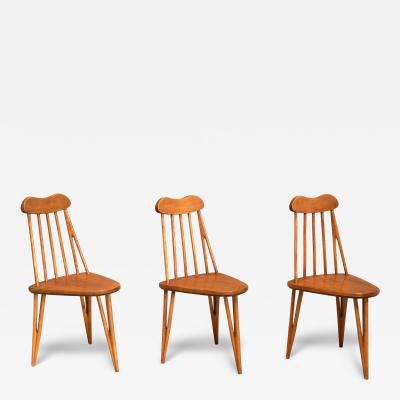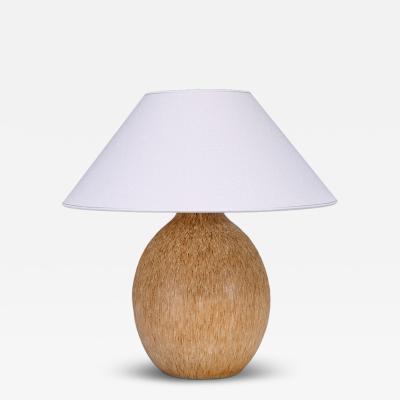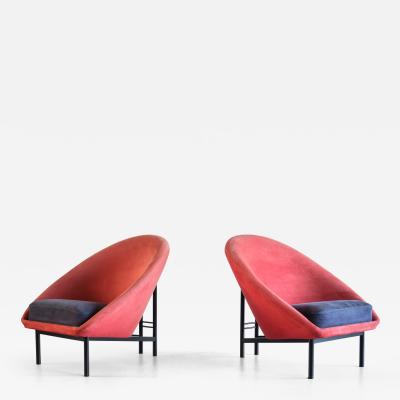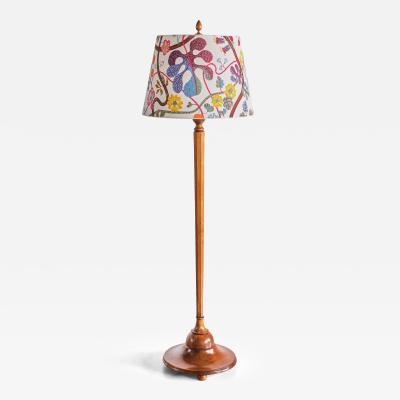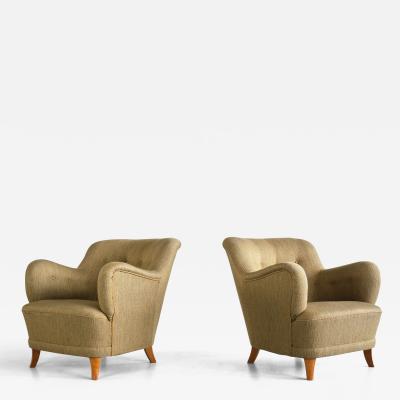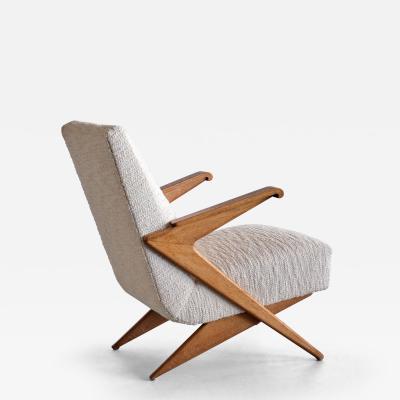This exceptional center table was produced in the Netherlands during the 1920s, most likely by the company H.P. Mutters & Zoon in The Hague, with the design attributed to Carel Adolphe Lion Cachet.
The striking design features a four-legged base and a round top crafted from a combination of solid oak and Macassar ebony. The circular oak top is refined with a thin round trim of Macassar, followed by a more substantial, contrasting band in solid Macassar. The contrast between the lighter oak and the darker Macassar, with its distinct grain, adds to the elegance of the design. The four outward-curved legs are beautifully carved and profiled, with detailed feet. Between each leg and the center of the table, a wavy lattice of solid Macassar is adorned with ocular-shaped cutouts, enhancing the table’s visual impact.
The originality of the design, paired with the high level of craftsmanship, makes this table a unique piece, suitable as either a center or large side table. The table is in very good condition, with only very minor signs of wear consistent with age and use.
About C.A. Lion Cachet Lion Cachet (1864–1945) is primarily associated with the Art Nouveau movement, though his work also reflects influences from the Arts & Crafts movement. His designs feature curvilinear forms, organic motifs, and elaborate decorative elements characteristic of Art Nouveau. At the same time, his emphasis on craftsmanship, high-quality materials, and traditional techniques aligns with the principles of the Arts & Crafts movement.
Cachet was also an important precursor to the Amsterdam School. His decorative approach, use of rich materials, and intricate detailing influenced this architectural and design movement. The Amsterdam School (active around 1910–1930) was known for its expressive, sculptural forms, rich ornamentation, and traditional craftsmanship—elements found in Cachet’s work. While he was not formally part of the movement, his ornamental and handcrafted style in furniture, bookbinding, and interior design helped pave the way for Amsterdam School designers.
In summary, Cachet’s work bridges Art Nouveau, Arts & Crafts, and the early Amsterdam School, solidifying his role as a significant figure in Dutch decorative arts.


